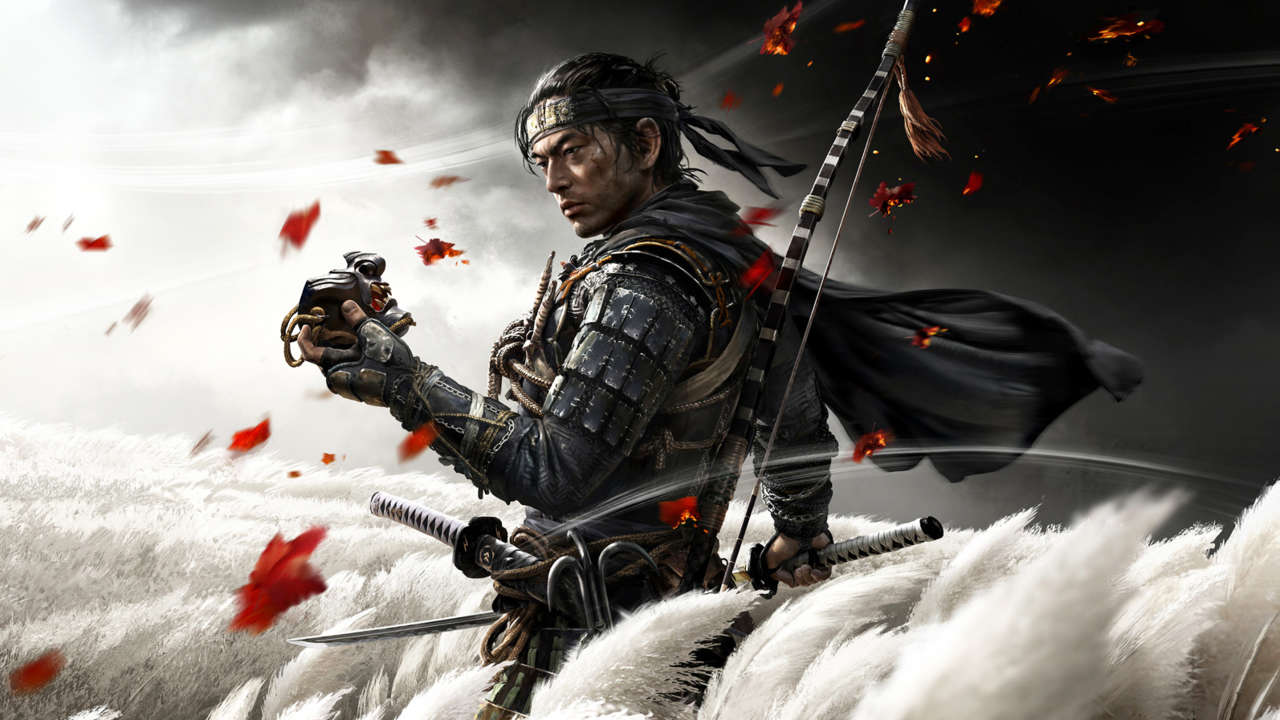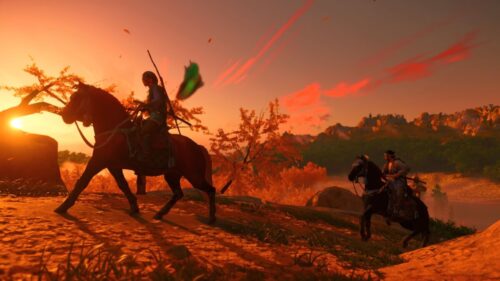
Back in 2007, it took around two days from the release of Assassin’s Creed for people to start speculating about a sequel set in feudal Japan. After all, ninjas are arguably the world’s most famous assassins. Ubisoft proved unwilling to make such an obvious move and now it has fallen to developers Sucker Punch to deliver open world ninja action in Ghost of Tsushima instead.
It’s far from a derivative clone, however, and Ghost not only delivers stealthy ninja deaths but also some robust (and arguably more satisfying) samurai action. Indeed, compared to many other open world games, Ghost of Tsushima’s sword fights are some of the best out there. That’s not to say that the game is without problems, mostly from the way it depicts Japanese history and culture. But we’ll get to that later.
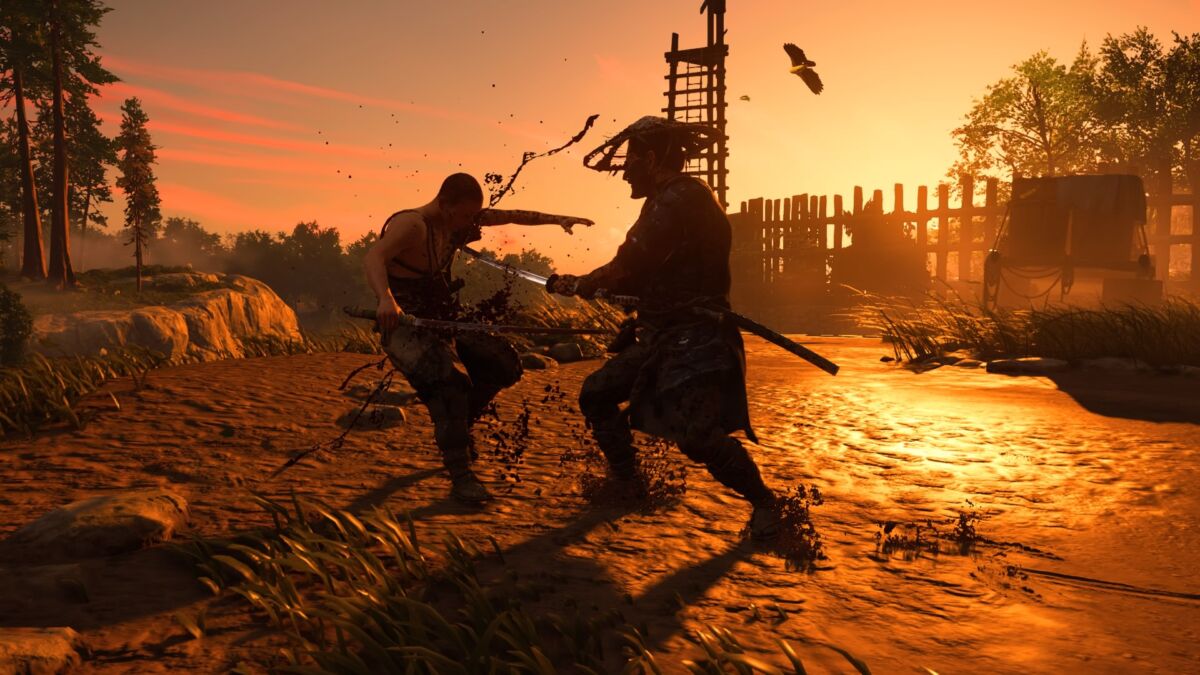
The events of the game take place in 13th century Japan. You play as Jin Sakai, a young samurai lord who has the unfortunate task of defending the island of Tsushima from Mongol invaders. Things do not go very well as it turns out those pesky Mongols don’t fight according to samurai traditions, and Jin wakes up as one of the only survivors of the first battle. This sets him on a course that will force him to bend and break the samurai code he swore to uphold since fighting the Mongols will require the use of both trickery and stealth.
As such behavior is abhorrent to the samurai, a lot of the story deals with Jin struggling with his loyalty to tradition and the needs of the time. Mechanically, this means we have access to some awesome ninja tools, like smoke bombs, kunai daggers, and grappling hooks on our journey. Ninjaing around in Ghost of Tsushima is quite fun and I especially enjoy how kinetic the abilities are. Bombs and kunai pack a punch and not only damage your enemies but also leave them stunned and sometimes scared, which makes cutting them down with your sword that much easier.

Otherwise, the stealth is similar to what we have played in the Assassin’s Creed series, although less acrobatic. You can climb up on cliffs and houses but not scale sheer walls or big monuments. You will, however, stick to shadows, crawl under buildings, hide in tall grass and slit people’s throats. It’s good fun, though perhaps a bit too similar to other games to feel truly fresh. The bombs and ninja tools help mitigate this, but don’t quite elevate the stealth above the competition.
While playing a sneaky ninja is fun, it pales in comparison to the treatment Ghost of Tsushima gives to the clashing of swords. It’s a much more active and impactful system than pretty much any other melee centric open world game out there. The fighting in Ghost of Tsushima has an emphasis on restraint and observing your opponent(s) — it’s usually better to react to an enemy’s attacks than swinging wildly at them. Almost all sword fights in the game have the potential of recreating your favorite moments in any given samurai film, even more so if you make use of the fantastic Standoff mechanic.
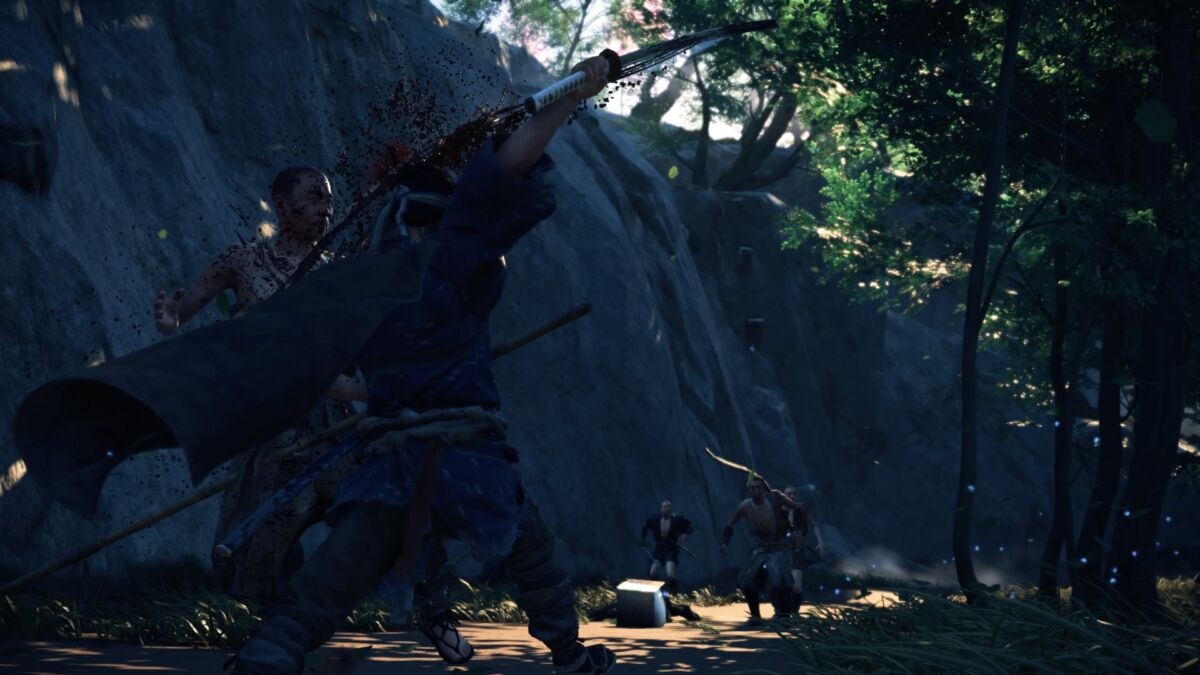
When approaching a group of enemies ,you can almost always press up on the D-pad to issue a challenge to your foes. This makes the bravest (or dumbest) opponent come forward and a mini-duel plays out. If you time your attack correctly and don’t fall for any feints or tricks, you will cut him down in one fluid motion. It can also be upgraded to murder even more enemies after you vivisect the first. It’s so damn cool that I often find myself in trouble since I opt for these Standoffs instead of engaging with the stealth.
That said, the combat in Ghost of Tsushima really comes into its own once you have unlocked a few abilities and can take advantage of both the ninja and samurai skillsets. Say you challenge a garrison to a duel, slay the first fool, and then dispatch his two pals who come running in a Standoff. Now the rest of the mob is rushing you, but you flick away a few kunai to stun and hurt them. Leap into the middle of the group, slashing as you go, and just as they recover from the initial barrage, you detonate a smoke bomb and take care of the rest. If there are any stragglers left after this, they can usually be mopped up with some good old fashioned sword work. It’s an awesome dance of death and while it might not have the same finesse and difficulty as, say, Sekiro, it’s mighty fun to play around with.
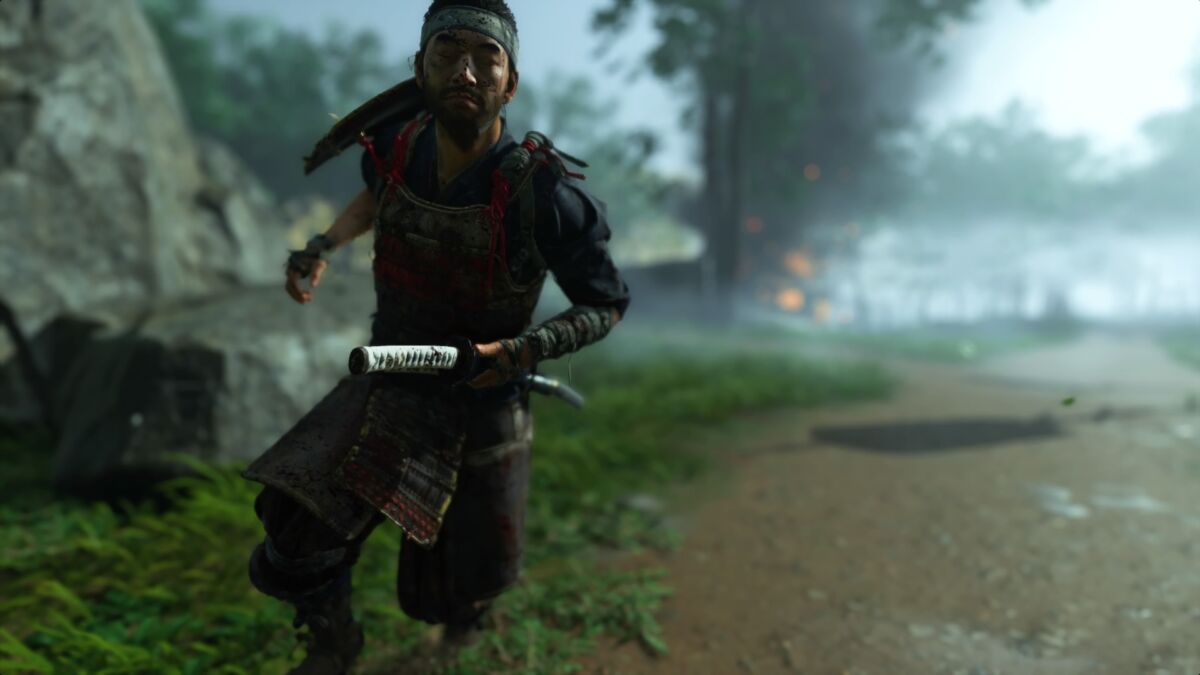
Aside from cutting down fools, a good deal of your time in Tsushima will be spent traversing the stunning landscape, solving various issues, and finding collectibles. Again, anyone who has played an Assassin’s Creed game will immediately feel at home in Ghost of Tsushima. The map is full of question marks, quests, and icons to go and check out. Like everything in the game, these side activities all come from one samurai movie or another. There are duels to fight, fox shrines to venerate, and haiku to ponder. Each one of them rewards you with some bonus resources or increases your stats and are often worth seeking out. But make no mistake, it is one of those open world games in which you almost have a checklist to fulfill in each area.
However, the way Ghost of Tsushima presents this checklist is truly spectacular. They have managed to completely remove the minimap from the game and it makes a huge difference in how exploration works. Instead of the map, the world around you is hinting to where you should go. The most prominent of these hints is the wind: set a destination on the map menu and the wind will blow in the general direction that you have to go. If you are lost, you can just swipe up on DualShock 4’s touchpad and a strong gust will show you the way. Aside from the wind, foxes will guide you to Inari Shrines and yellow songbirds will show you the way to some secret or hidden thing. It works surprisingly well and I have only occasionally had trouble finding the right set of tracks or something the game wants me to follow. Those issues are few and far between, however, and I gladly make the trade to lose the minimap.
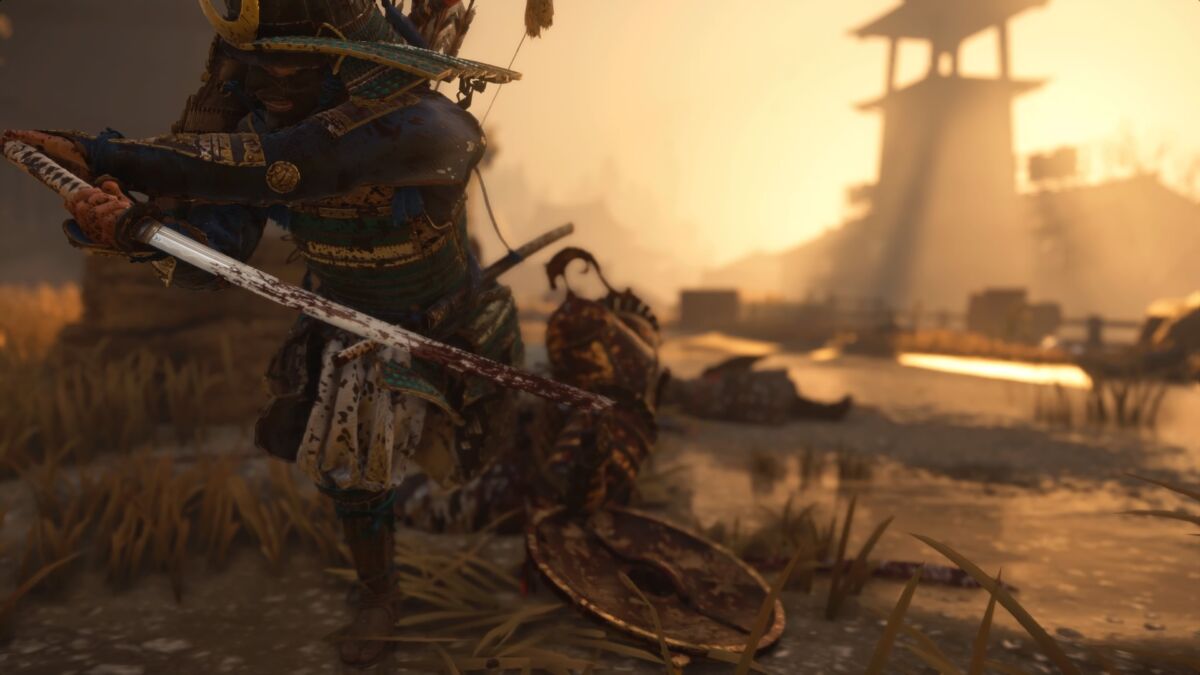
As you don’t have to stare at your minimap all the time, it allows you to truly soak in the game’s incredible landscapes. Ghost of Tsushima is easily one of the most striking looking games I have ever played, on any platform. Almost every single angle and place in the game is worthy of a postcard. A lot of this is achieved through the amazing use of colored lighting and HDR. Going through a bamboo grove will make the greens and the shadows bleed over to Jin and his swords, giving them a greenish tint. Likewise, riding through a forest full of autumnal leaves will cast the scene in yellows and reds. Combine this with an equally impressive weather system and it becomes jaw-dropping. Not since The Witcher 3 have I ridden through mistier and more windswept landscapes.
With all this eye-candy, you might suspect that the game would run less than optimally on the good old stock PS4, but Ghost of Tsushima runs surprisingly well on the machine. There are a few dips in framerate here and there, but for the most part everything just hums along nicely. I was especially impressed by the short load times and the snappy fast travel. These days it’s increasingly rare to be impressed by those things in a console title.
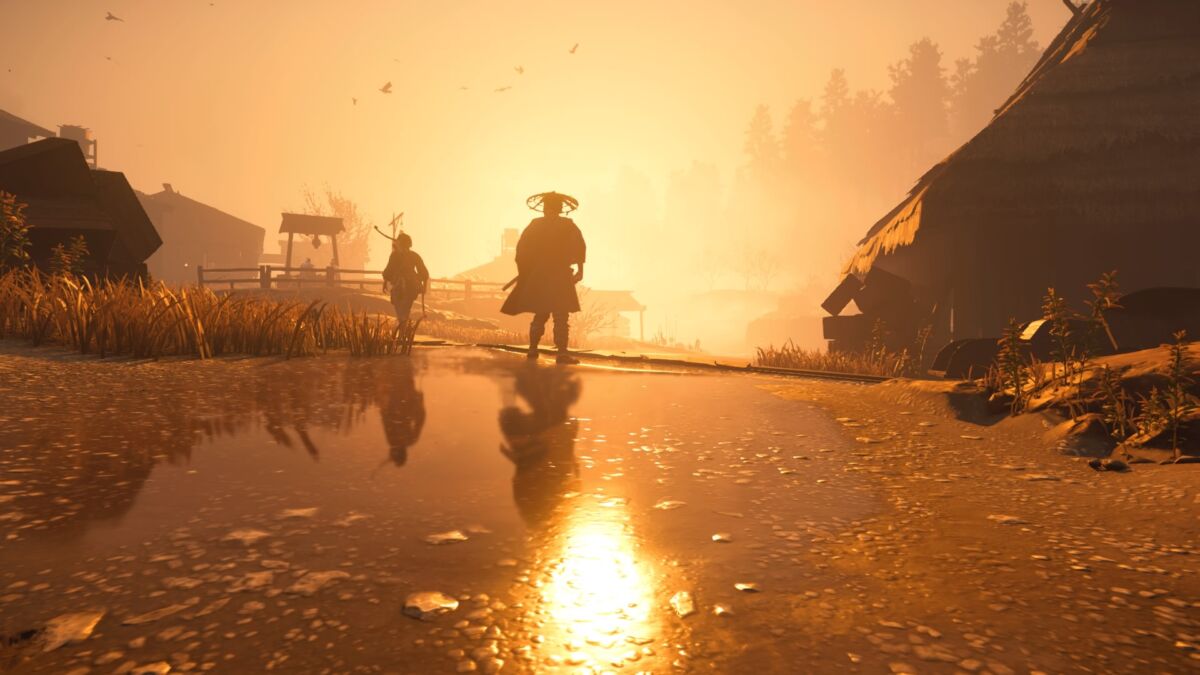
Where Ghost of Tsushima falters the most is sadly in the ways it deals with Japanese history and culture at large. Sure, the game wears its samurai movie and jidaigeki (period drama) influences on its sleeve, they even went so far as to name a black and white mode in the game after Kurosawa Akira. Sadly, it’s mostly just skin deep. While every single place in Tsushima looks gorgeous, nowhere feels like a real and lived-in place. It’s not Japan you play in, it’s Kurosawa-land. Duels to the death are on your right and the haiku lodge is to the left, and do remember to pick up a straw hat from the gift shop.
This surface-level treatment also extends to the historical period in which the game is set. Very little in Ghost of Tsushima is historically accurate for the period, in any way. It’s an amalgamation of different eras and modes of thought. The code Jin is so concerned about betraying hasn’t even been invented yet, and won’t be for another 300 years. Likewise, the samurai and ninja as depicted here are at least a couple centuries early.
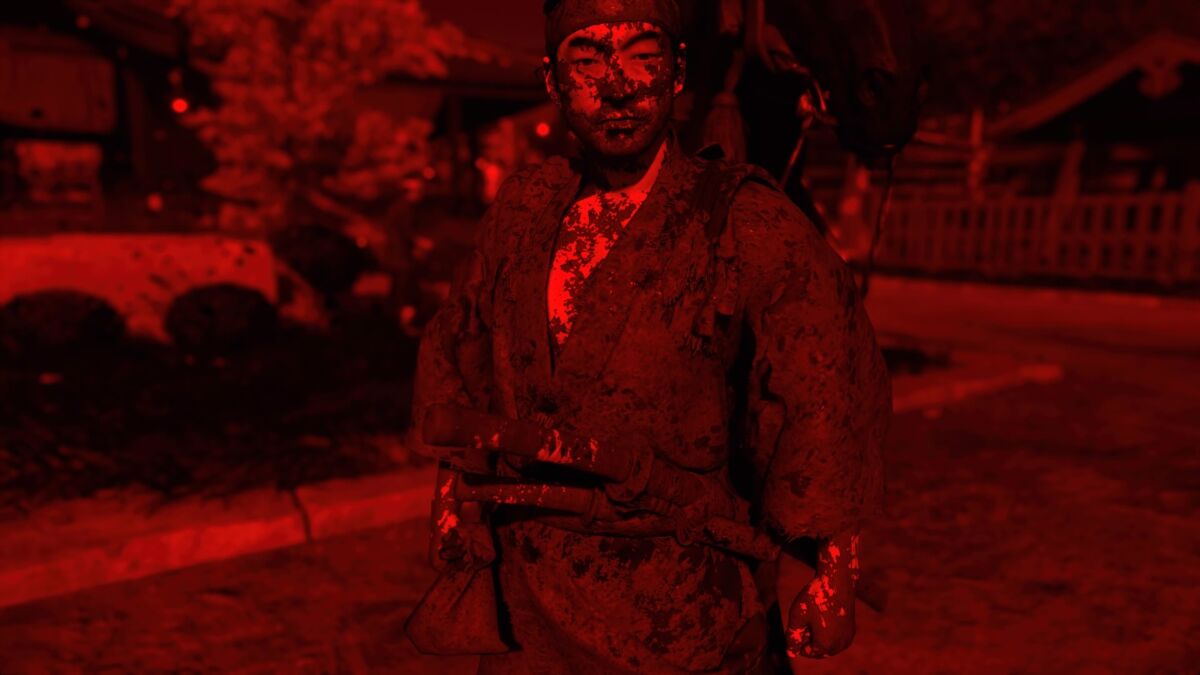
Normally, I am not much of a stickler for historical accuracy in games, but Ghost of Tsushima keeps constantly poking at this issue with how Jin goes around fretting over his uncle and the samurai code and the way the overall Mongol invasion is depicted. Especially since other games like Shadow Tactics: Blades of the Shogun and Sekiro have managed this much better in the past. Sekiro even manages to make giant snakes, murderous monkeys, and centipede controlled monks feel natural. Ghost of Tsushima would probably have benefitted from setting the game in a made-up place instead of relying on specific historical events and areas as it’s seemingly quite uninterested in actually depicting those.
This also echoes in the voice work in the game. I played the game in Japanese, and while the voices are great, it’s painfully clear that lip-sync animations weren’t changed from the English version. Playing Ghost of Tsushima in Japanese is essentially like watching a dubbed movie. It’s not a major thing, but again, given the setting and movie aesthetics the game is going for, I wish some more care had been taken. Going forward, as visual fidelity improves, I suppose this will become an issue we will have to live with as redoing every animation for localization is probably unrealistic. That said, I’ll take the Japanese voices with the slightly off animations over the forced, vaguely Japanese/Asian accents of the English track any day of the week.
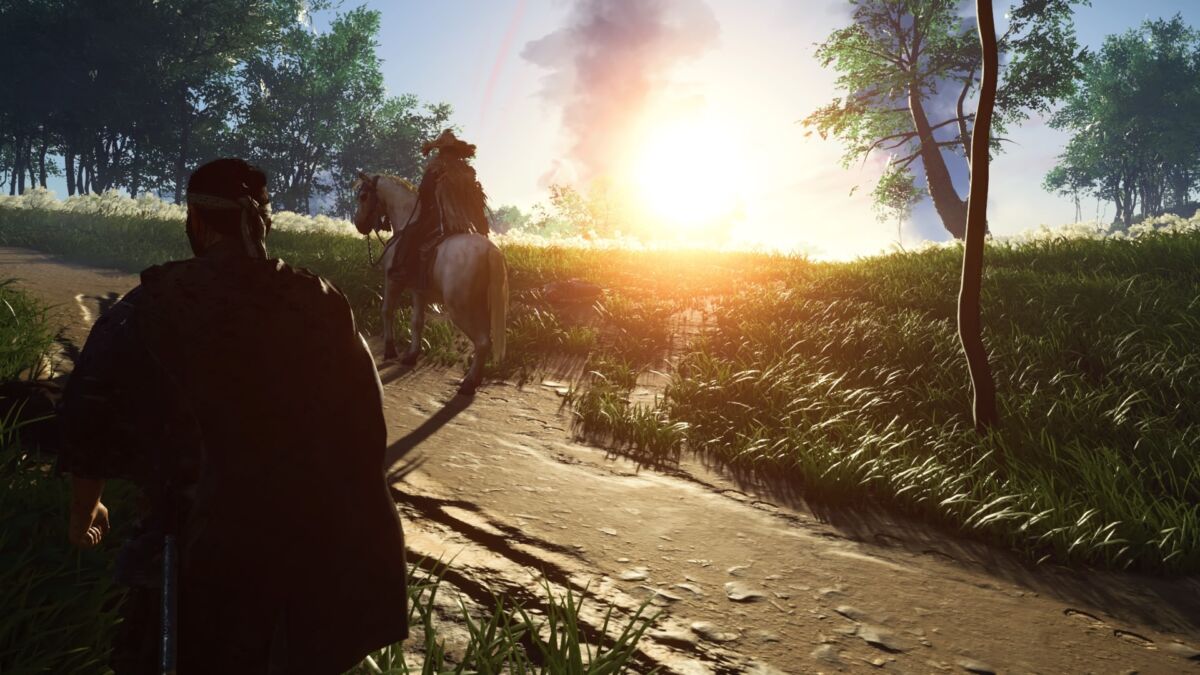
While the overall story and the main thrust of the game has its issues, Ghost of Tsushima is blessed with some truly great tales and side stories. They are not only more satisfying and have better writing, but they also allowed me to forget the setting and the time period it’s supposed to take place in. While helping an archery teacher find his murderous runaway student, I could ignore the historical fallacies more and imagine we were in the much later Sengoku or Edo period, which fit much better with the samurai motif.
It’s also in these stories you will meet the most interesting characters. The archery teacher is something of an eccentric, and one story even has you helping an onna-bugeisha avenge her butchered grandchildren. Most of these tales and side quests are quite entertaining and some, like the female samurai, highlight things I have seldom seen in western media concerning the samurai or Japanese history at large.
Despite some shortcomings, Ghost of Tsushima is still a sublime game full of impressive moments and features. The combat is incredibly fun, every single duel and standoff making you feel like you’re in a badass samurai movie. Likewise, all the ninja tools at your disposal are satisfying to use. The game is also a tour de force in impressive visuals and incredible landscapes that will have your jaw drop. In fact, the game is so beautiful it had me constantly using the robust Photo Mode, something I seldom do in games.
Your enjoyment of Ghost of Tsushima will, in the end, come down to how much you enjoy open world games and how much you know about/value the Japanese history and culture. If you can stomach the inaccuracies and love having a big map to find collectibles in, then welcome: Kurosawa-land is open and waiting for you, samurai.
A code for Ghost of Tsushima was provided by PR for the purposes of this review.
Some of the coverage you find on Cultured Vultures contains affiliate links, which provide us with small commissions based on purchases made from visiting our site.
